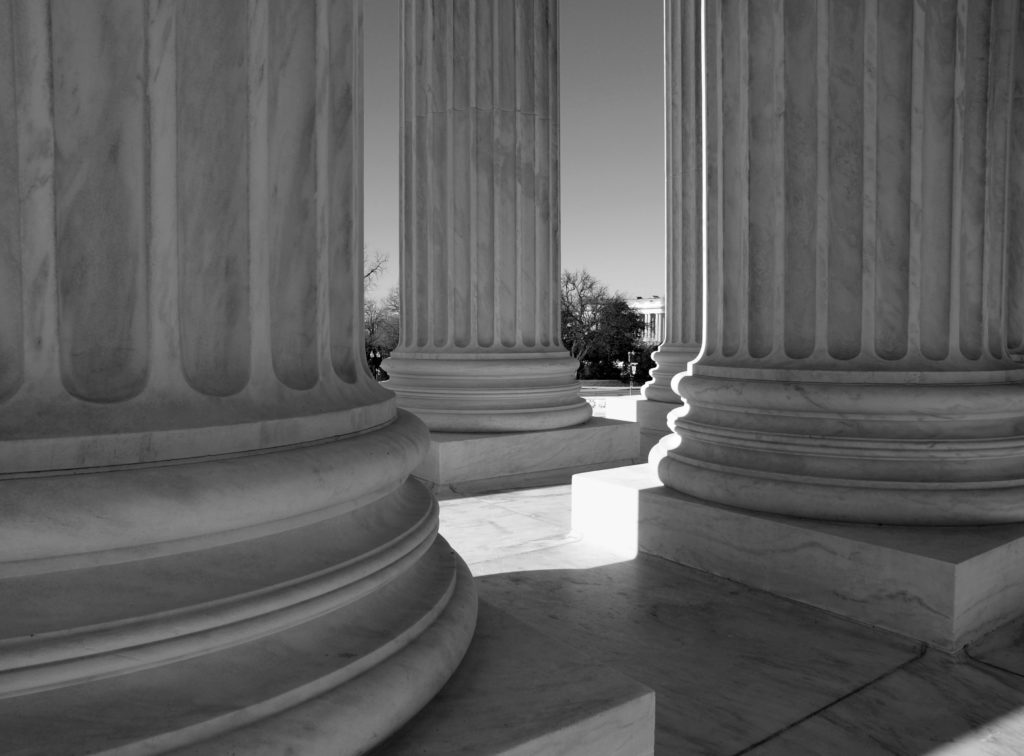My friend James Phillips recently wrote a fascinating Public Discourse article on how the next Republican president should select his or her Supreme Court justices. He argued that part of why Republican Supreme Court nominations have been lackluster is that we haven’t performed the right kind of vetting, so we have failed to arrive at a sound evaluation of a candidate’s durable legal philosophy. In short, when it comes to the Supreme Court, justices’ past performance is no guarantee of future outcomes because the job is unlike any other in the legal profession. A justice is really only as constrained as he or she wants to be.
Phillips proposes a solution to this vetting predicament: look to the state supreme courts for potential nominees. In many instances, state supreme courts have the same final authority as the United States Supreme Court. State supreme courts are the final interpreters of pure questions of state law, and—as common law courts—their justices have considerable independent authority. As a result, Phillips argues, state justices have better paper trails than other contenders for the top slot. Circuit judges, by contrast, are typically bound by Supreme Court precedent. These constraints disappear once a judge is promoted to justice. A judge may have spent his life on the court of appeals faithfully applying Roe v. Wade and Casey v. Planned Parenthood and still want to overturn both.
This is a very helpful perspective, but ultimately it’s incomplete.
How Bad Have Our Justices Been?
Start your day with Public Discourse
Sign up and get our daily essays sent straight to your inbox.An underlying question for how Republicans should vet possible Supreme Court justices is how bad our justices have actually been.
It’s no secret that Republican justices have been disappointing in many ways. Phillips points out that part of this involves a tension within conservative jurisprudence whereby “minimalists” (like John Roberts) prioritize stability, and “constitutionalists” (like Clarence Thomas) favor the correct constitutional answer et ruat caelum. Somewhere in between was the “fainthearted originalist” Antonin Scalia, while outside the playing field entirely were Republican “failures” like Warren Burger, Harry Blackmun, Lewis Powell, Sandra Day O’Connor, Anthony Kennedy, and David Souter.
As I have explained at Public Discourse before, this way of looking at things puts the methodological cart before the horse. The development of the most recognizable forms of conservative legal thought post-dates most of the weak Republican nominees. The Nixon justices who gave us Roe were put on the Court to rein in Earl Warren, and that’s what they did. Recent scholarship supports this view. In his book Nixon’s Court, Professor Kevin McMahon argues that Nixon had a coherent political approach to the judiciary, whereby “law and order” and anti-busing judicial policies were prioritized as a way to appeal to northern ethnic voting blocs concerned about “the social issue” (urban degeneration). Broadly, Nixon succeeded both in winning their “silent majority” votes and in putting a stop to the pro-criminal excesses of the Warren Court and the later iterations of desegregation.
But what about when legal conservatism got off the ground? Reagan still gave us O’Connor and Kennedy while the first George Bush gave us Souter. Even so, it’s hard to draw any sweeping conclusions from these choices. Sandra Day O’Connor was the result of a campaign promise to appoint the first woman to the Supreme Court. Given that her competition is thought to have been the late Judge Cornelia Kennedy of the Sixth Circuit—whose record was probably to the left of O’Connor’s—it’s possible that, given the totality of the circumstances, this pick dodged a bullet. Anthony Kennedy was Reagan’s third choice for the seat after the unprecedented derailment of Judge Bork’s nomination. In many ways, Kennedy’s appointment was a result of Justice Scalia (and conservatives) winning so much that the Democrats were sick of it. David Souter is really the only one where the vetting process failed, in large part because internal administration politics favored him on account of the parochial interests of some presidential advisors. As the saying goes, personnel is policy—no less when it comes to judicial policy.
The Case for State Justices
But today we do have decades of developed legal conservatism, unlike in the Nixon and Reagan years. And there is institutional knowledge to help us avoid political pitfalls. So how should Republicans vet Supreme Court candidates to ensure a career-long commitment to sound jurisprudence? Should Republicans prioritize the state justices? Perhaps this is the coming trend: after all, Donald Trump surprised many by including five state justices in his list of putative Supreme Court nominees.
As Phillips argues, there is a good reason for this. In many cases, state justices can decide what the law of their states will be with no real external restraints. Tort law, conflict of laws, state criminal law, state constitutional law, land use, and any number of other issues primarily fall to state supreme courts to unravel. A state justice, therefore, should have an ample and interesting record of how he himself approaches select legal issues.
At the same time, it’s not entirely clear how a conservative should view this record. Some choices by a state justice are easily tested for jurisprudential soundness—for example, textualism in state statutory interpretation. But other choices can be harder to unpack. A state supreme court typically has significant policymaking authority in products liability litigation. Would a “conservative” state justice be one who uses this authority to make his state more pro-defendant? What if the state has a statutory regime that’s generally pro-plaintiff: would the “conservative” position be one that yields a pro-defense outcome or a pro-statute process? The answer probably depends on whether you’re asking a local law professor or a local businessman. In other cases, there just isn’t necessarily a “conservative” choice for state justices. Is strict adherence to the parole evidence rule “conservative”? Is interest analysis in conflict of law “liberal”? Where does one even begin with the rule against perpetuities? The answers aren’t obvious.
Nevertheless, state justices also have the advantage of typically operating in an en banc environment. Although there are exceptions—the Court of Appeals for the District of Columbia sits by panel—a state justice needs to consistently herd all the cats of a full court to get her way. A successful state justice, therefore, has probably demonstrated the judicial-process savvy necessary to be an effective Supreme Court justice.
The Case for Circuit Judges
And yet there are serious downsides to nominating state justices, given the differences between the state and federal judicial systems. The Supreme Court’s docket is full of cases unique to the federal courts: questions of international relations, intellectual property, federal jurisdiction, federal statutes (including federal crime), federal administrative law, and other areas of law where state supreme courts just aren’t active. Indeed, the federal courts—including the Supreme Court—are necessarily limited in their jurisdiction by Article III, just as Congress is by Article I. State supreme courts, on the other hand, are effectively common-law courts. While it’s true that state justices don’t have the constraints of judicial precedent, they also don’t necessarily have experience in the constitutional constraints provided by limited jurisdiction.
Circuit judges, on the other hand, deal with almost all the same federal issues the Supreme Court sees. They are generalists in both federal and—through diversity jurisdiction—state law. Given the Supreme Court’s ever-shrinking docket, in the vast majority of cases a circuit court is the court of last resort for parties even if it is bound by Supreme Court precedent. And the circuits frequently handle cases of first impression where there is no binding answer. Indeed, the Supreme Court is known for relying on so-called “circuit splits”—waiting to see how different courts of appeals resolve an issue of law on their own—in deciding whether to take a case on certiorari.
Furthermore, circuit judges have already gone through the process of Senate confirmation. While a Supreme Court nomination is orders of magnitude more taxing than a circuit nomination, the basic process should be familiar to a sitting federal judge. Many of the same players are involved. It’s not an accident that almost all Supreme Court nominations over the last forty years have come from the federal appellate bench.
The Best of Both Judicial Worlds
So one category of choices—state justices—has a track record of independent thinking, but not the full spectrum of federal legal experience. The other category—federal appellate judges—has the background in federal law but lacks the relevant independent record.
There is a solution: the next Republican president, when picking a Supreme Court justice, should look to a federal appellate judge who also served on a state supreme court. Such a judge would then have the proven record of sound independent jurisprudence to be found among the highest levels of the state bench, while also possessing the legal and political experience of a federal commission, and thus be most likely to persevere as an exponent of conservative jurisprudence. This combination is one that would yield successful Supreme Court justices.













